2013 Ford Escape Review – Video

If it ain’t broke, replace it. That, at least, seems to be the motto at Ford when it comes to the brand’s Escape compact crossover.
FAST FACTS
| 1. Three engines are on offer: a 168 hp 2.5L, a 178 hp 1.6L EcoBoost and a 240 hp 2.0L EcoBoost. |
| 2. Fuel economy for those three engines is: 22/31, 24/33 and 22/30 mpg (for front-wheel drive). |
| 3. The 2013 Escape starts at $23,295 and tops out at $31,195 (including $825 for delivery). |
| 4. An available hands-free liftgate is a segment first. |
Truthfully, the previous Escape was not without its flaws, many of which were simply the result of it being an old product. And yet people flocked to Ford dealers to trade in whatever they could in order to buy an Escape. What, then, made the truck-styled cute-ute a top choice for so many consumers? And yes, we did just answer our own question. Its looks, of course.
It’s shocking then, at least at first, that Ford would move away from the rugged, masculine and quintessentially American design in favor of a look that’s sleek, stylish and downright European. The reasons for the dramatic change are many and include everything from Ford’s new design philosophy to a larger plan to build cars globally. Boxy compact crossovers might work in America, but as far as Europeans are concerned, Ford might as well try and sell them a Crown Victoria.
Get the Flash Player to see this player.
COMPACT STYLE, BUT MORE SPACE
With its sleek new style the Escape may now look more compact than its predecessor, though it’s actually larger, stretching four-inches more in length, with a two-inch longer wheelbase and an extra inch in width. It is, however, roughly in inch lower overall and loses a half-inch of ground clearance.
Interior room is up slightly, particularly in the rear seat, with one extra inch of legroom. Likewise, cargo room has been increased slightly to 34 cu-ft behind the 2nd row and 68 cu-ft total.
With the added size also comes added weight – a surprise considering most other automakers are shedding pounds in an effort to improve fuel economy. Overall, the 2013 Escape is in excess of 100 lbs heavier than its predecessor, or even more if you’re comparing it to the base 2012 model with the manual transmission – an option Ford axed for 2013 with the automatic now standard.
Regardless of the weight gain, fuel economy has been improved significantly, due both to engine technology as well as a shape that’s 10 percent more aerodynamic than the old brick-on-wheels design.
THREE FUEL-EFFICIENT ENGINE OPTIONS
The base 2.5-liter four-cylinder, about the only carry over item from the old Escape, is now rated at 22/31 mpg, up 1 mpg in the city and 3 mpg on the highway. (All mpg ratings are for front-drive models). Power numbers are down, but only minutely.
Replacing the V6 option for 2013 is an EcoBoost 2.0-liter 4-cylinder making use of both turbocharging and direct injection. It’s rated at 240 hp and 270 lb-ft of torque (an increase of 47 lb-ft), while fuel economy jumps 3 mpg in the city and an impressive 5 mpg on the highway.
A third powertrain option is also available, though it’s not a hybrid. Ford has dropped the Escape hybrid option for 2013, opting instead to offer gas-electric version of the upcoming C-Max. Part of a larger eco car plan, Ford is certain to regret this decision as the Escape Hybrid was a popular option and not having it will allow another automaker to move in and fill that model’s place.
Instead, the “hybrid replacement” is an EcoBoost 1.6-liter engine rated at a lofty 24 mpg city and 33 mpg highway. Ford says that’s best-in-class, but the Mazda CX-5 achieves 26/32 mpg with an automatic transmission, or 26/35 with a manual.
Another bit of marketing spin you’re likely to hear from Ford is that the 33 mpg highway rating makes the Escape 1.6-liter even more fuel efficient than the outgoing Hybrid. That’s stretching the truth, however, as the 24 mpg city rating is nowhere near close to the 34 mpg rating of the 2012 Escape Hybrid.
Power for the 1.6 is, however, much improved over the Hybrid model, with 178 hp and 184 lb-ft of torque. While Ford does say only 87 octane is required, those numbers come when using premium. Power numbers for 87 octane haven’t been released, but they’re certain to be a little lower.
A few ponies here or there isn’t about to make a big difference either way, and the 1.6-liter EcoBoost motor should deliver perfectly acceptable driving performance. We’d like to verify that, but Ford had a shortage of 1.6-liters on hand to test and so we spent the day behind the wheel of a 2.0-liter.
It proved more than adequate, especially as it’s only available in the top trim Titanium model, with every conceivable feature including big 19-inch wheels.
A JOY TO DRIVE
The drive itself is excellent, as we’d expect from a crossover based on the fun Focus. It’s more enjoyable than it needs to be (always a bonus), reacting fast with a direct electric power steering system.
At highway speeds when the road deteriorated somewhat we did notice that the rear of the Escape seemed to slap around some. We’d suggest the culprit is a stiffly sprung suspension, which in turn is what helps make the Escape so enjoyable to drive. Again, with the larger 19-inch wheels and low profile 235/45/19 tires, much of that feel should be appropriately dampened with the 17s and higher-profile 235/55/17 tires.
Helping to make the 2013 Escape a more enjoyable drive, as well as a safer one, are two new technologies that Ford seems to be rolling out across its model lineup. Called Torque Vectoring Control and Curve Control, the former acts to slow the inside wheels in a corner using the car’s stability control and braking system, while the latter actually uses the brakes at each corner to subtlely slow the car by as much as 10 mph if you enter a curve too quickly. Likely to be imperceptible to most drivers, the result is a more enjoyable and safer drive.
ADDED TECH, PLUS A HANDS-FREE LIFTGATE
Those are just a few of the many class-exclusive features in the 2013 Escape, with others including Active Park Assist (which will parallel park the car for you), a blind spot monitoring system, front and rear park assist warnings, a cross traffic alert system that will notify you if an object is approaching as you reverse and even a hands free rear liftgate – watch the video above for a demonstration on how it works.
Inside, the cabin is very much a familiar feel to the Focus, with the high-tech MyFord Touch screen one of the coolest looking telematics systems on the market. With plenty of criticism of the early versions of MyFord Touch, Ford has since improved it, simplifying the screens and hiding some of the fancier options. Another notable addition is access to Audible.com, where you can download audio books.
Despite complaints, we’ve never had an issue understanding MyFord Touch, although many of the touch icons on the screen are still far too small.
With all these improvements and updates pricing for the 2013 Escape has jumped over its predecessor with the base crossover up roughly $1,000 to $23,295. SE models will start at $25,895 with the SEL at $28,695 and the top-trim Titanium at $31,195. (All prices include $825 for delivery).
THE VERDICT
After moving a quarter-million Escapes last year, Ford probably could have dragged the old box out for another generation. But the push is on to recreate the Blue Oval brand and the old look, along with a platform donated by the now-ancient Mazda 626, is a more than acceptable casualty of Ford’s global product plans.
It’s not as though the trade-off is one-sided either, with a new design that, despite being different, is undeniably handsome. The 2013 Escape also delivers a vastly improved driving experience, more fuel-efficient engines, plenty of technology and some amazing new features. It’s even able to maintain many of the more truck-like features, keeping a 3,500-lb tow rating (on the larger engine), while delivering more passenger and cargo room.
For the most part Ford’s global gamble is certain to pay off, though it’s not hard to see some Escape loyalists jumping to the still boxy GMC Terrain. Ford’s smaller gamble, that of axing the Escape Hybrid, however, is sure leave many customers feeling jilted.
With the lack of a hybrid, Ford has also given up any claim to best-in-class fuel economy – regardless of any marketing spin you might hear. The new Escape is impressive, but it’s also packed with asterisks, so take it for a test drive but be sure to read the fine print.
Related Reading
2012 Honda CR-V Review – Video
2013 Mazda CX-5 Review – Video
2012 GMC Terrain Review
2011 Toyota RAV4 Review
2010 Hyundai Tucson Review
2010 Chevy Equinox Review
LOVE IT
- Sleek new look
- Engine selection
- Great handling crossover
- Plenty of optional features
LEAVE IT
- No more hybrid
- MyFord Touch still needs some work
- Ride quality a bit rough on 19s

With AutoGuide from its launch, Colum previously acted as Editor-in-Chief of Modified Luxury & Exotics magazine where he became a certifiable car snob driving supercars like the Koenigsegg CCX and racing down the autobahn in anything over 500 hp. He has won numerous automotive journalism awards including the Best Video Journalism Award in 2014 and 2015 from the Automotive Journalists Association of Canada (AJAC). Colum founded Geared Content Studios, VerticalScope's in-house branded content division and works to find ways to integrate brands organically into content.
More by Colum Wood















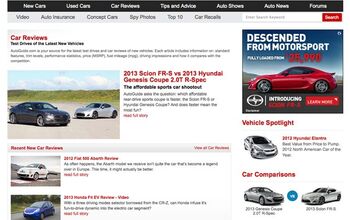

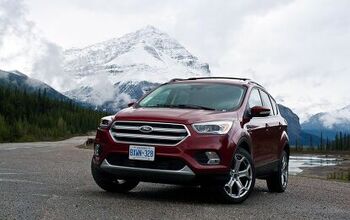




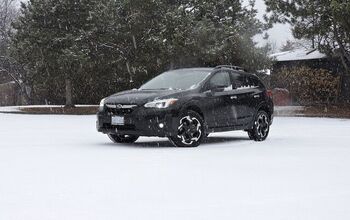
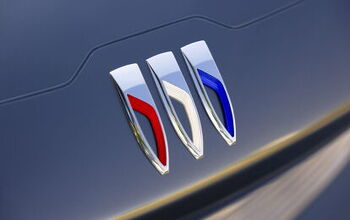


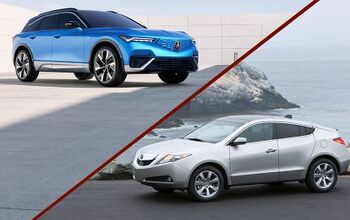
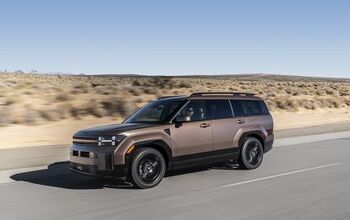

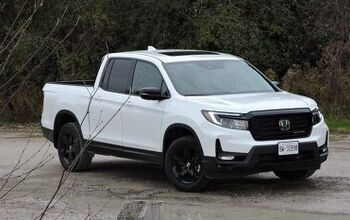
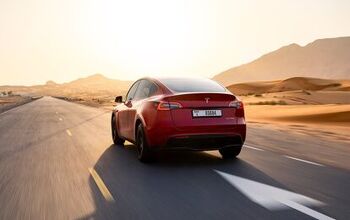
Comments
Join the conversation
I rented a well equipped escape in Portland and loved the handling..fun to drive. Brakes good and mileage...eh..nothing to brag about here but ok. I am not an suv guy but I liked the darn thing.